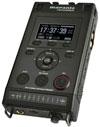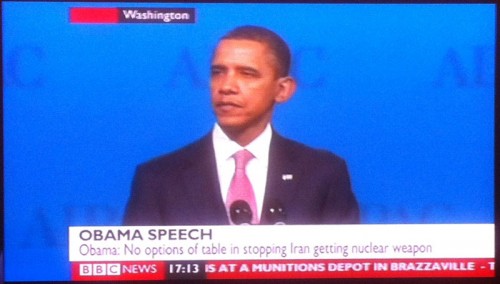Print is dead? Not in Bath, it seems. Which makes sense – it is a heritage city, after all.
Debating the motion Digital is killing the print industry: the presses will stop running in ten years, last week’s D:Bate event at the Bath Digital Festival saw print nostalgics and digital evangelists slug it out to win over an audience that, according to pre-debate polling, was largely on the fence on the issue.
Two panels of three speakers lined up on each side. In the digital camp were Richard Godfrey (CEO of software company iPrinciples), Chris Book (founder of audiobook publisher Bardowl) and novelist Julian Gough (Author of Jude: Level 1),
For the printies were Mike Goldsmith (editor-in-chief, digital editions, Future Publishing), Robert Topping (owner of the fine Toppings bookshop) and Sam Holliday (editor of the Bath Chronicle).
At the start, the audience was split sort of evenly on the motion:
- For: 16
- Against: 19
- Undecided: 20
But all that was to change. Here’s a summary of the arguments, complete with some of Freelance Unbound’s trademark shaky, poorly shot video. (Sadly I only managed to film the first four speakers, as I forgot to pack an extra memory card for the video. Duh). See if you can figure out which side should have won…
Digital
Chris Book, Bardowl
Chris Book is in the business of developing and distributing digital audio books. He loves books – but wonders why we are wedded to the printed book format.
- Printed books in a decade will become like vinyl records – available to a collectors’ market
- A tactile, sensual experience will not be enough to save the format
- Digital innovation will, ironically, preserve the printed book somewhat via services such as print-on-demand
- Digital audio books have allowed unabridged audio publication and boosted sales
- Digital publication will remove the 300-350 page limit for paperbacks – and also encourage much shorter fiction
- Instant access to eBooks means more impulse purchase from online recommendation
- Digital access could revolutionise global education and information
- In ten years, only 10% of books will be accessed on paper
Richard Godfrey, iPrinciple
Richard Godfrey believes traditional publishing is already on life support – and is probably dead, but just doesn’t know it yet.
- This debate is one we will always have when new technology disrupts business as usual.
- In another age, D:Bate might have been held 2000 years ago, considering whether paper was killing the stone tablet industry.
- 2000 years later, of course, the tablet is back…
- Bill Gates: “We always overestimate the advance of technology in two years, and substantially underestimate them in 10”
- In 2007: Facebook and Wikipedia were largely unknown; the iPhone did not exist; the Kindle was launched that year
- Reading is becoming a richer, more engaging and collaborative process
- Print publication is in a steep and terminal decline, based on US statistics
Print
Sam Holliday, Bath Chronicle
Sam Holliday embraces his status as a print dinosaur and celebrates the strengths of print – he believes it has a long future, based on statistics of print usage in the newspaper industry.
- Three weekly papers in and near Bath sell 30,000 copies a week, read by 90,000 people – all actively paying for editorial content
- 1,100 regional and local newspapers are read by 33 million people a week, with 42 million users of their 1600 associated web sites (supported by print journalism).
- More than 60% of people say they respond to press advertising
- The industry still employs 30,000 people, including 10,000 journalists
- More than 6,100 local newspapers are sold or distributed in the UK every minute
- Launch of the Sun on Sunday shows potential for national print news journalism
- Global newspaper circulation has barely declined – standing at 520 million copies a day
- Youth readership is growing in Europe thanks to innovative new free titles such as the Metro
- Argues that the move from daily to weekly publication of the Bath Chronicle is a positive move, boosting circulation
- The web is an ally, allowing the Chronicle to reach three distinct audiences (but needs print revenue to fund it)
- Professional news media are needed to perform the investigative role of journalism
- Don’t sell your printing press just now – but if you do, advertise it in the newspaper, as you’ll get a better response…
Robert Topping, Toppings bookshop
As a bookshop owner, Robert Topping has a clear interest in the preservation of the printed book.
- The book has always been a niche product – apart from the minority of bestsellers
- Predictions of a plastic, technological future are always overstated – TV has not managed to wipe out the book
- Books provide a tangible memory
- Technology is an ally in the process of selling books
- Reading the printed volume is a more emotionally engaging experience
- No one in the print publishing industry believes digital will erase print in the next 20 years
At the end of the evening, the emotional appeal to print nostalgia and the desire for the world to be how it ought to be, rather than where it seems to be going, won the day. The final score:
- For: 20
- Against: 41
- Undecided: 5




